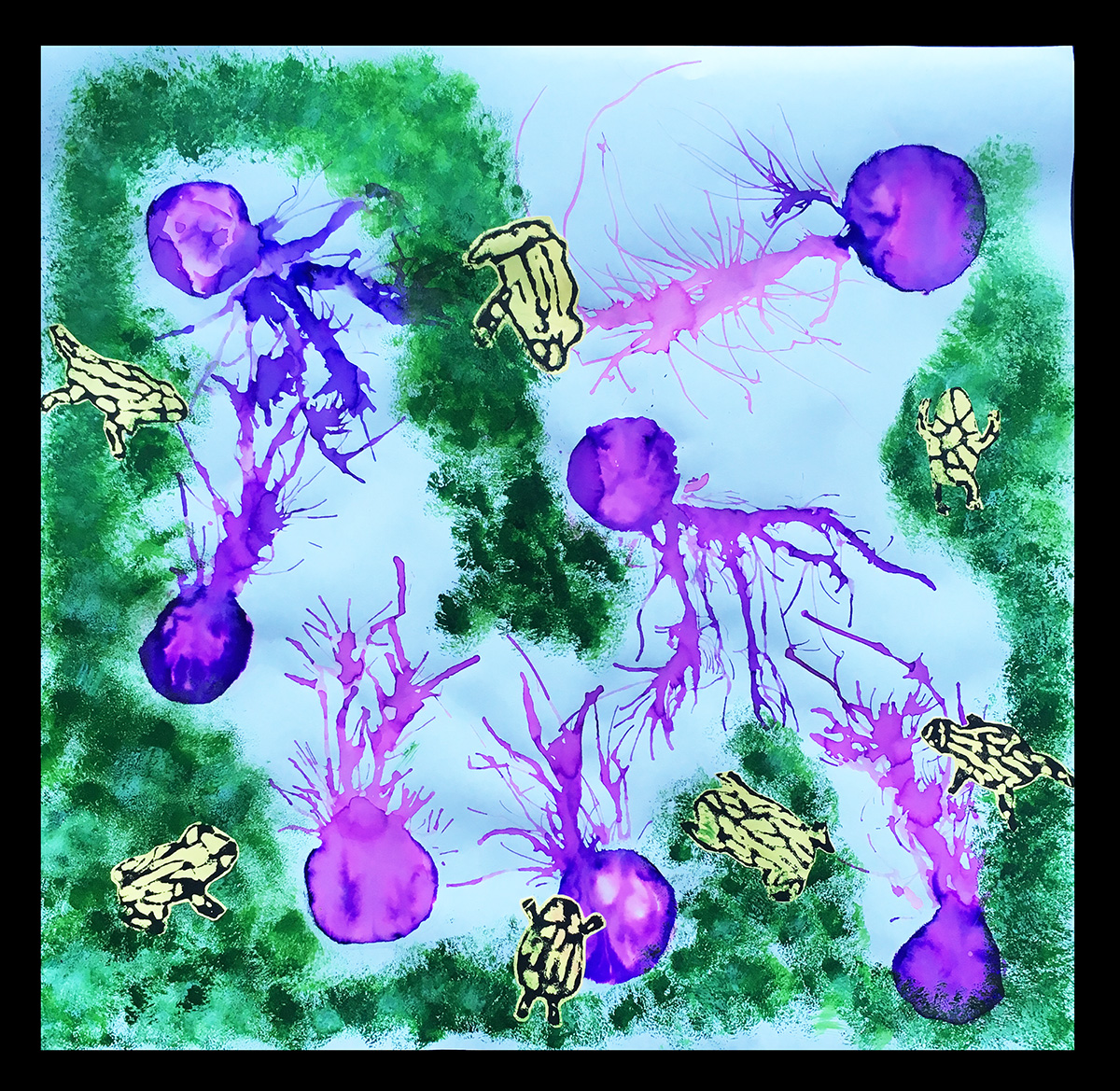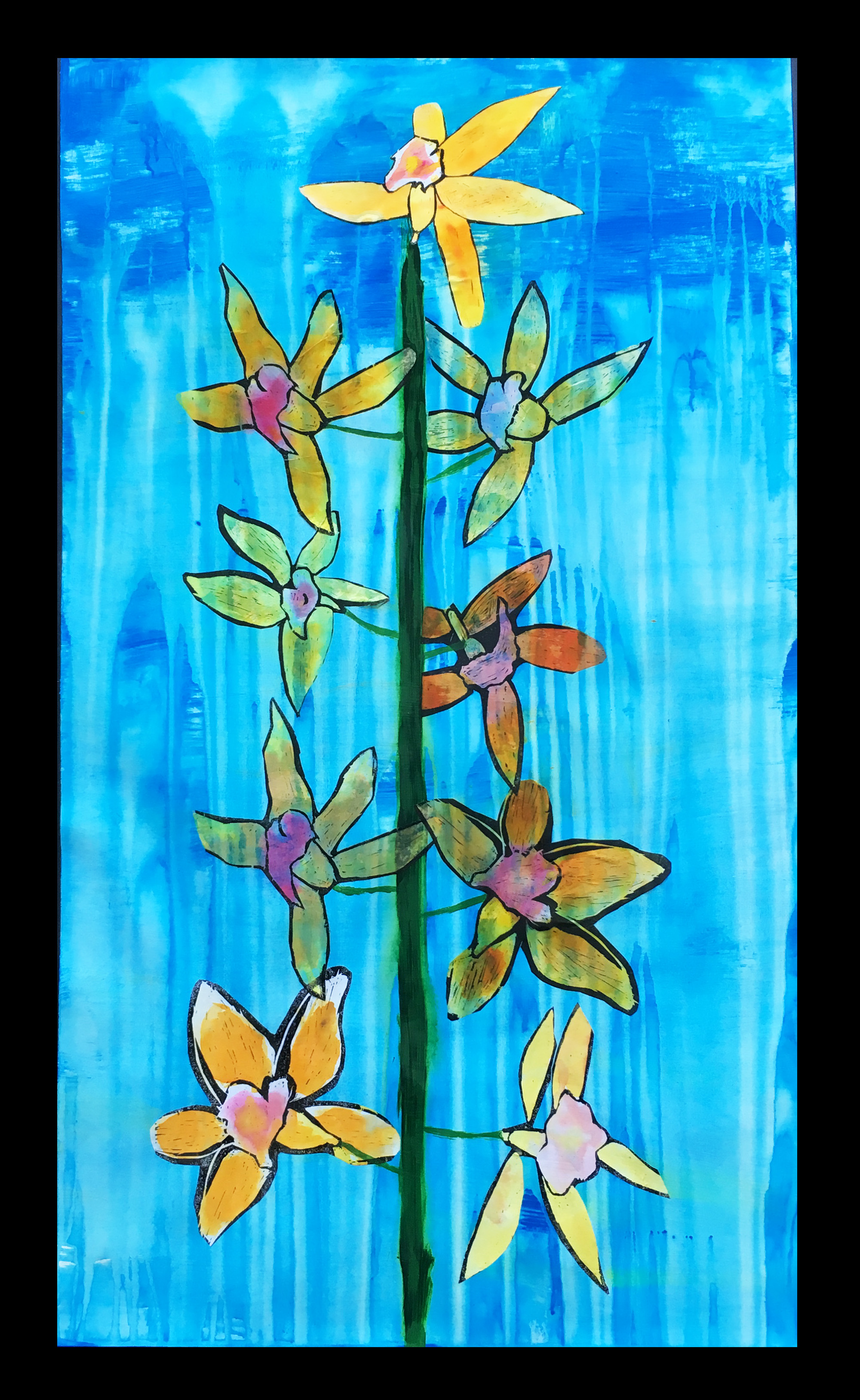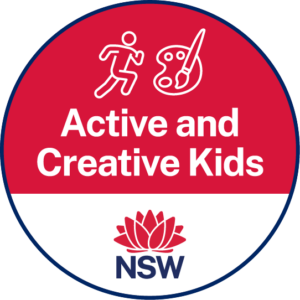Fungus Threatens Frogs
The Corroboree Frog is found in south-eastern NSW and the ACT. It is a very tiny amphibian weighing only 3 grams and no bigger than 3 cm. Although small in size they have very unique patterns; bold yellow and black longitudinal stripes on its top, sides and legs and marbled black, white and yellow belly. Corroboree Frogs are threatened by the Chytrid fungus and the introduction of domesticated flora and fauna due to their impact on the local waterways. The fungus is spread through water attacks the frogs’ skin and affecting their heart. Each classmate carved the bold black strips of the frog into foam then made prints onto yellow paper. The Chytrid fungus was created by drawing a circle with a small opening, using clear wax. Flooding inside the ring with watercolour we blew the watercolour through the small opening this technique replicated the look of the virus, the background moss was sponged in around the virus, using complementary colours for an eye-catching representation of the unsafe environment that they live in. Without our help in creating a safe environment, these tiny frogs will become extinct.
Swamp Orchid
Swamp Orchids are a massive part of our ecosystem, and they mustn’t die out. The stem of the Swamp Orchid is one of the most giant land orchids, with a stem that can grow up to two metres in length. The Orchid has broad leaves, with a creased appearance. The Orchid was first described by Baron Ferdinand von Mueller in 1858, the species is now endangered, and scientists fear it is going to become extinct.
The main reasons why this fantastic flower is being threatened is people collecting them. It’s called the illegal collection of plants when people like us take them and grow them for themselves, the flowers can suffer. Some homes are not designed for keeping large orchids, so the orchids end up dying. The population has massively decreased now only down to 180 swamp orchids in the wild.
For this art piece, we used acrylics for the background. The flowers were carved into lino, the flowers were then printed on to paper. When the ink was dry, we used watercolours to colour the flowers. The flowers were then carefully arranged on the paper. The painting was then varnished.
Artist statement by Emilie Tang
Group artwork created at Art Box Workshops art classes for children 9-12 years old by
Emilie, Alex, Joanna, Sienna, Gemma, Aaliyah, Nita
Video of the Creative Process



